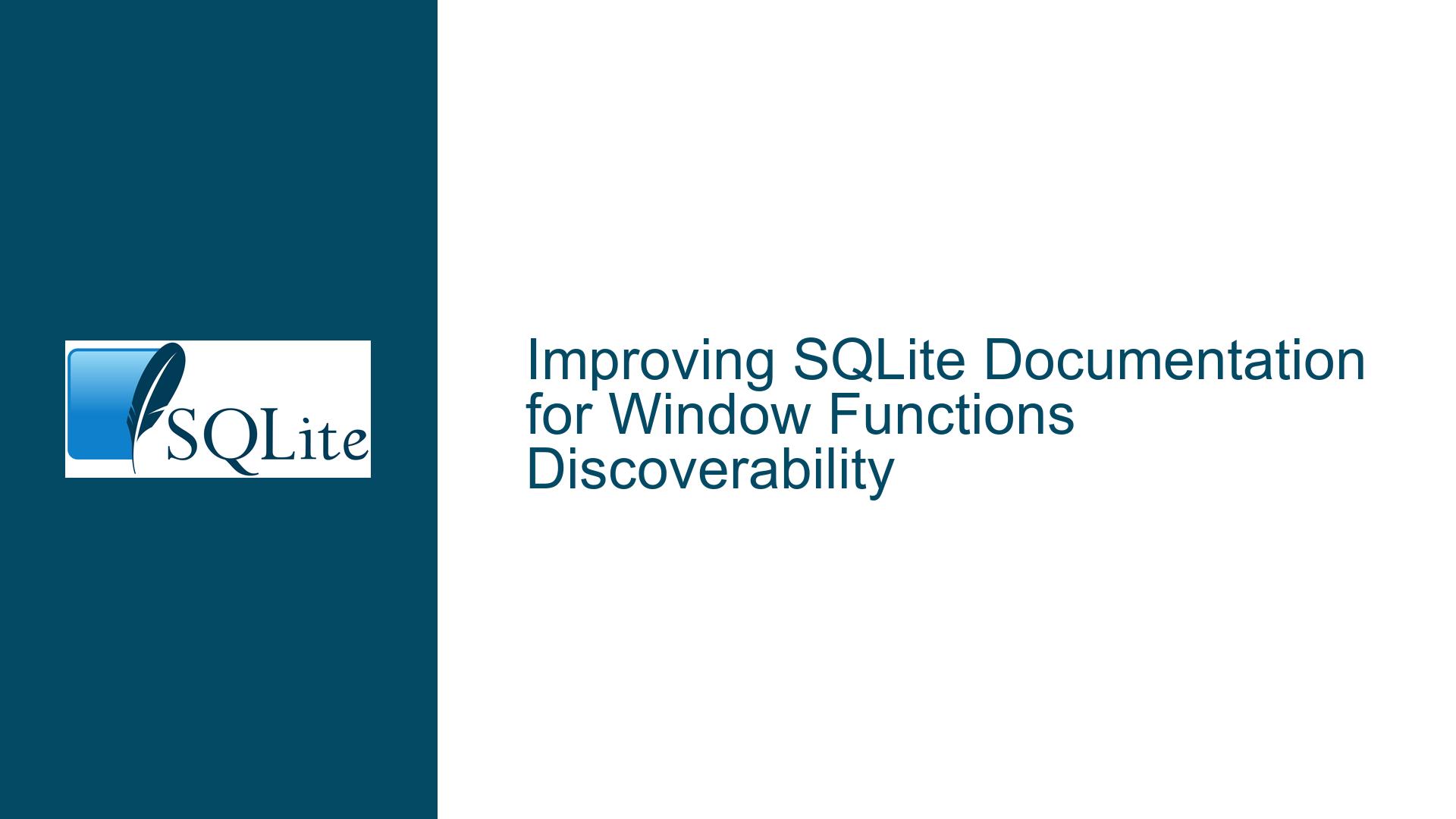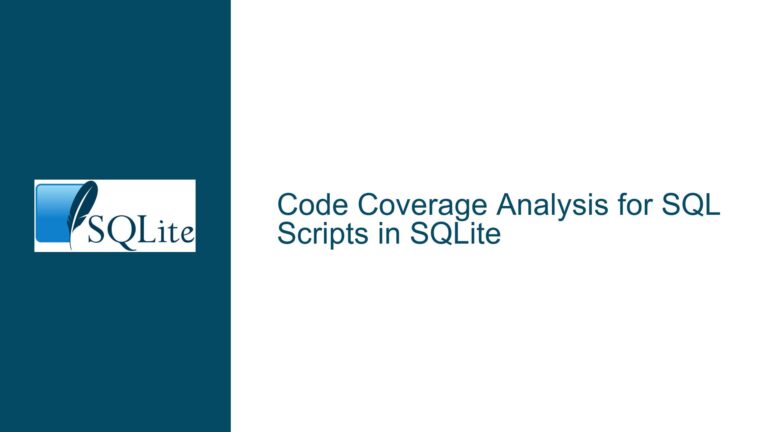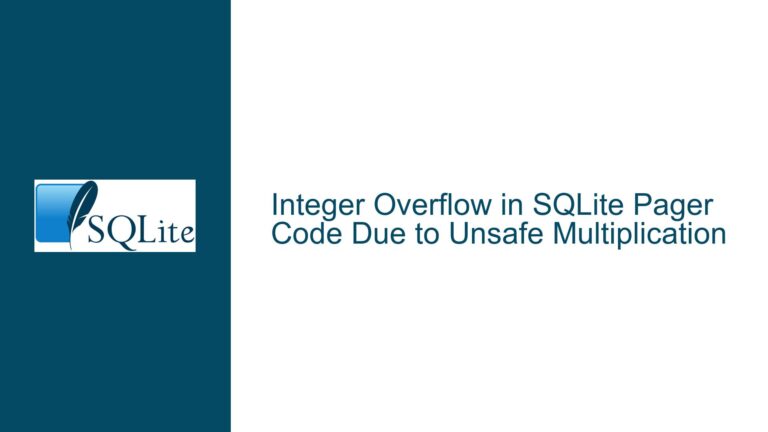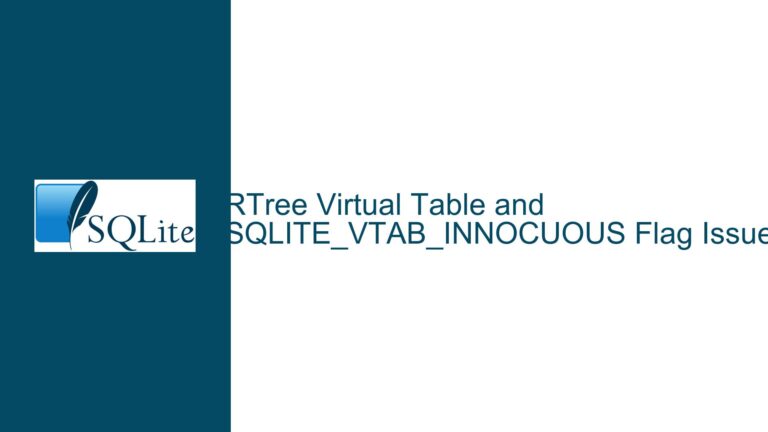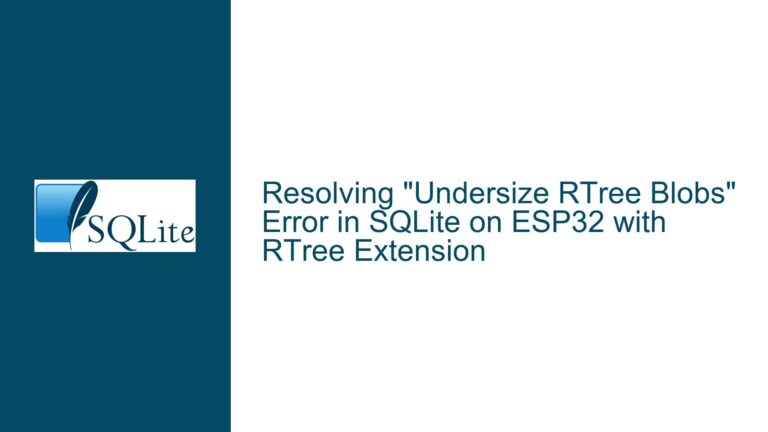Improving SQLite Documentation for Window Functions Discoverability
Issue Overview: Lack of Comprehensive Indexing for Window Functions in SQLite Documentation
The core issue revolves around the discoverability of SQLite’s window functions, such as RANK(), within the official SQLite documentation. While SQLite does support a robust set of window functions, these functions are not as easily discoverable as other functions, such as COS(), which have dedicated entries in the keyword index. This creates a potential barrier for users who rely on the documentation to explore and utilize SQLite’s full capabilities.
The problem is not the absence of documentation for window functions but rather the lack of direct indexing and visibility in the primary documentation indices. For instance, the RANK() function is documented under the "Window Functions" page, but it does not appear in the keyword index or have a standalone entry like many other SQLite functions. This makes it harder for users to find these functions unless they already know where to look or perform a specific search.
The issue is further compounded by the fact that SQLite’s documentation is otherwise highly regarded for its clarity and thoroughness. Users have come to expect a certain level of accessibility, and the absence of direct references to window functions in the index pages can lead to confusion or the mistaken assumption that these functions are not supported.
Possible Causes: Documentation Structure and Indexing Gaps
The root cause of this issue lies in the structure and organization of SQLite’s documentation. While the documentation is comprehensive, it is not uniformly indexed. Functions like COS() are given individual entries in the keyword index, making them easy to find. In contrast, window functions such as RANK() are grouped under a broader category ("Window Functions") without individual index entries.
This discrepancy likely stems from the historical development of SQLite’s feature set. Window functions were introduced in SQLite 3.25.0 (released in 2018), which is relatively recent compared to core functions like COS(). As a result, the documentation for window functions may not have been fully integrated into the existing indexing system. Additionally, the documentation team may have prioritized other updates, given the limited resources and the complexity of maintaining a large and detailed documentation set.
Another contributing factor is the reliance on search functionality. While the documentation does include a search feature, it is not a substitute for a well-organized index. Users who are unfamiliar with the terminology or who do not know to search for "Window Functions" may struggle to locate the relevant information. This creates a discoverability gap that affects both new and experienced users.
Troubleshooting Steps, Solutions & Fixes: Enhancing Documentation for Window Functions
To address this issue, several steps can be taken to improve the discoverability of window functions in SQLite’s documentation. These solutions aim to maintain the high quality of the existing documentation while making it easier for users to find the information they need.
1. Add Individual Index Entries for Window Functions
The most straightforward solution is to add individual index entries for each window function, such as RANK(), ROW_NUMBER(), and DENSE_RANK(). This would mirror the approach taken for other functions like COS() and ensure that users can find these functions directly through the keyword index. Each entry should include a brief description of the function and a link to the relevant section of the "Window Functions" page for more detailed information.
2. Update the Keyword Index Page
The keyword index page (https://sqlite.org/keyword_index.html) should be updated to include references to window functions. This could be done by adding a new section specifically for window functions or by integrating them into the existing categories. For example, the "Aggregate Functions" section could be expanded to include "Aggregate and Window Functions," with clear distinctions between the two types.
3. Improve Cross-Referencing in Documentation
The documentation should include more cross-references to guide users to related content. For instance, the page for aggregate functions could include a note about window functions and a link to the "Window Functions" page. Similarly, the "Window Functions" page should include links to the individual function entries in the keyword index. This would create a more interconnected documentation system that helps users navigate between related topics.
4. Enhance Search Functionality
While the search feature is not a replacement for a well-organized index, it can be improved to better support users who rely on it. For example, the search algorithm could be tuned to prioritize results from the keyword index and provide more context for each result. Additionally, the search interface could include suggestions or auto-complete functionality to help users find the correct terms.
5. Provide Examples and Use Cases
Including more examples and use cases in the documentation can also improve discoverability. For instance, the "Window Functions" page could include a section that demonstrates common scenarios where window functions are useful, such as ranking, partitioning, and cumulative calculations. These examples would not only make the functions easier to understand but also help users recognize when they might need to use them.
6. Solicit Feedback from the Community
Finally, the SQLite documentation team could solicit feedback from the community to identify other areas where discoverability could be improved. This could be done through surveys, forum discussions, or direct outreach to users. By involving the community in the documentation process, the team can ensure that the documentation meets the needs of its users and continues to evolve in response to their feedback.
Conclusion
The issue of discoverability for window functions in SQLite’s documentation is a solvable problem that requires a combination of indexing updates, cross-referencing improvements, and community engagement. By taking these steps, the SQLite team can ensure that all users, regardless of their experience level, can easily find and utilize the full range of features that SQLite has to offer. This will not only enhance the user experience but also reinforce SQLite’s reputation as a powerful and accessible database solution.
